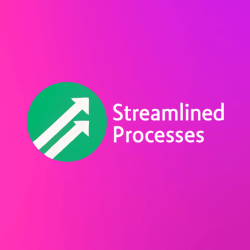For Saas Subscription Billing Comparison, see our main page here.
Why Subscription Billing Tools Matter in SaaS
The SaaS industry thrives on recurring revenue. As a result, choosing the right billing software directly impacts growth, customer retention, and revenue health. A strong system helps streamline payments, manage renewals, and automate invoicing.
Many SaaS companies mistakenly rely on manual processes in the beginning. However, as customers grow, these systems buckle under pressure. That’s why using billing software early can help avoid costly errors later.
For example, startups using Excel for billing often miss failed payments or renewal opportunities. In contrast, established companies using automated billing can detect churn risks quickly. This difference points to the long-term ROI of scalable billing systems.
Key Billing Features to Look For
When conducting a Saas Subscription Billing Comparison, it’s important to focus on features that align with your business model.
- Automated Recurring Billing: Supports monthly, yearly, or custom billing intervals.
- Flexible Pricing Models: Enables flat-rate, usage-based, or tiered pricing.
- Dunning Management: Helps recover failed payments automatically.
- Invoice Customization: Branded invoices can improve customer trust.
- Trial Conversions: Tracks when trials convert, and manages the billing shift.
Most importantly, a well-rounded platform handles complex use cases like proration, refunds, and taxes across regions.
Popular SaaS Billing Tools: A Breakdown
Let’s explore some of the best names often featured in any Saas Subscription Billing Comparison:
- Stripe Billing: Known for developer-friendliness. Great API support and fast integration. Used by startups and enterprises alike.
- Chargebee: Best for growing SaaS businesses. Offers robust integrations, usage-based pricing support, and analytics.
- Recurly: Excels in dunning and churn management. Ideal for media and subscription-first firms.
- Zuora: Built for enterprise-level flexibility. Handles global subscription management across various verticals.
- Paddle: Combines billing with tax compliance, mainly for B2C and international SaaS products.
During a Saas Subscription Billing Comparison, it’s helpful to match tool strengths with your business needs. For instance, if tax compliance is key, tools like Paddle and FastSpring offer excellent support for EU VAT and US sales tax.
Integrations and Ecosystem Support
SaaS billing doesn’t operate alone. Therefore, your selected system should communicate with CRMs, accounting software, and analytics platforms.
Popular integrations include:
- Salesforce for customer tracking
- QuickBooks or Xero for accounting
- HubSpot for marketing automation
- Google Sheets for custom reporting
- Slack for real-time payment alerts
In short, a system that plays well with your existing tech stack saves time and reduces manual errors. This compatibility often decides long-term satisfaction.
Real Companies, Real Results
Companies that switch to automated SaaS billing tools often see fast improvements.
Take Segment, a data platform. After integrating Chargebee, they reduced revenue leakage and scaled usage-based pricing without hiring extra staff. Similarly, the tech newsletter platform Substack uses Stripe to manage creator payouts and recurring reader subscriptions globally.
These transformations demonstrate that the right billing solution can directly impact the bottom line, operational scalability, and customer satisfaction.
Trends Shaping Subscription Billing
SaaS is evolving fast. So are billing expectations. Below are a few trends impacting Saas Subscription Billing Comparison conversations:
- Usage-Based Pricing: Companies want to bill by consumption, not flat fees.
- AI-Driven Forecasting: Platforms now predict payment failures and optimize revenue recovery.
- Cross-Border Compliance: International expansion demands localized tax handling, multi-currency support, and country-specific rules.
- Embedded Finance: Some platforms now offer embedded payment tools, reducing reliance on third-party processors.
As a result, modern billing solutions are much more than payment systems—they drive operational strategy and customer experience.
How to Choose the Right Platform
If your business is scaling, a thoughtful Saas Subscription Billing Comparison will save you years of tech debt. Here’s a simple approach to help decide:
- Define Billing Needs: Flat-rate? Usage-based? International customers?
- Understand Your Buyer Type: B2C clients expect smooth checkouts, while B2B often need invoices or PO support.
- Evaluate Your Stack: Will the billing platform integrate with your CRM, ERP, or help desk?
- Check Reporting Capabilities: Subscription metrics like MRR, churn, and LTV matter deeply.
- Test Support Experience: Ask for a demo. Gauge how fast and helpful the support team truly is.
This strategic checklist works whether you’re a solo founder or an established SaaS CFO. It avoids flashy features and focuses on sustainable fit.
FAQs About Saas Subscription Billing
What is the biggest challenge in picking a SaaS billing platform?
The hardest part is aligning software capabilities with your future growth. For example, starting with basic needs is fine. But if you expand into B2B sales or international markets, your platform must support multiple currencies, taxes, and payment methods.
Can these platforms handle automatic renewals?
Yes. Most modern subscription billing tools include smart renewal and reminder features. Stripe and Chargebee offer automatic invoice generation and card retries upon payment failures.
How important is dunning automation?
Very. Dunning helps recover failed payments using polite reminders and retry logic. Recurly users see up to a 73% recovery on failed charges because of its optimized dunning workflows.
What pricing models can these tools support?
Nearly all leading platforms allow fixed, usage-based, tiered, and hybrid pricing. This means you can combine trial periods, discounts, overage fees, or per-seat models with ease.
In short, flexibility is now a standard feature, not a luxury.
The Role of AI in Billing Software
In today’s competitive SaaS space, traditional billing systems are quickly upgrading thanks to AI. Automated fraud detection, renewal forecasting, and dynamic pricing are now possible using AI-driven insights.
As an example, AI tools in Recurly can flag payment trends that alert finance teams before issues escalate. Similarly, Chargebee’s AI can spot upsell opportunities based on subscriber behavior.
This article was created with the assistance of AI tools and reviewed by our team at Streamlined Processes LLC to ensure accuracy and relevance.
Follow us on Facebook here.

